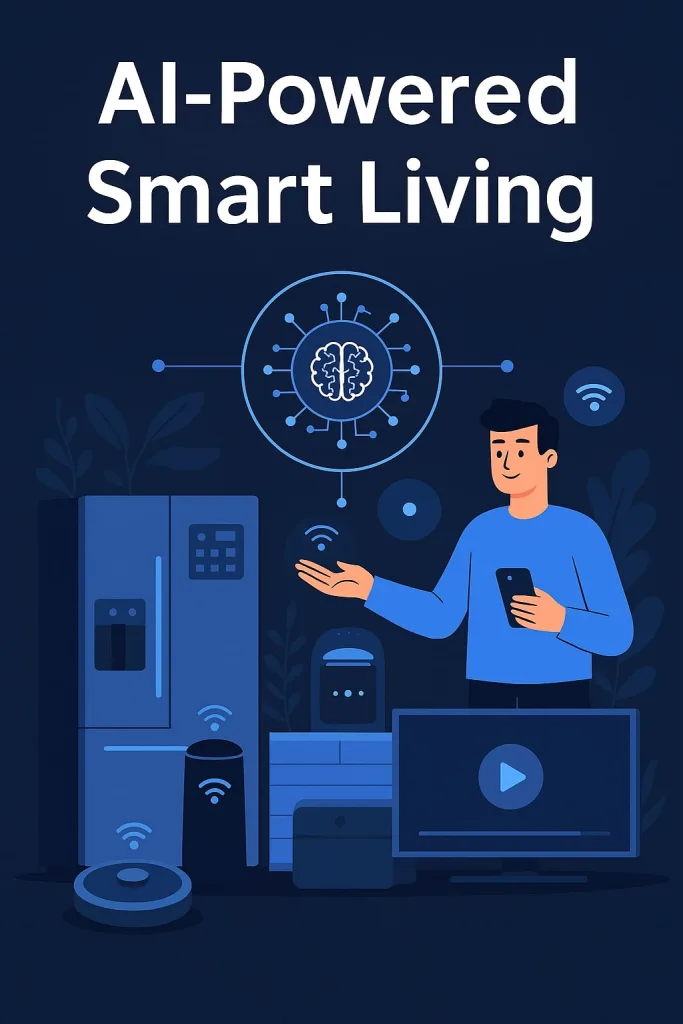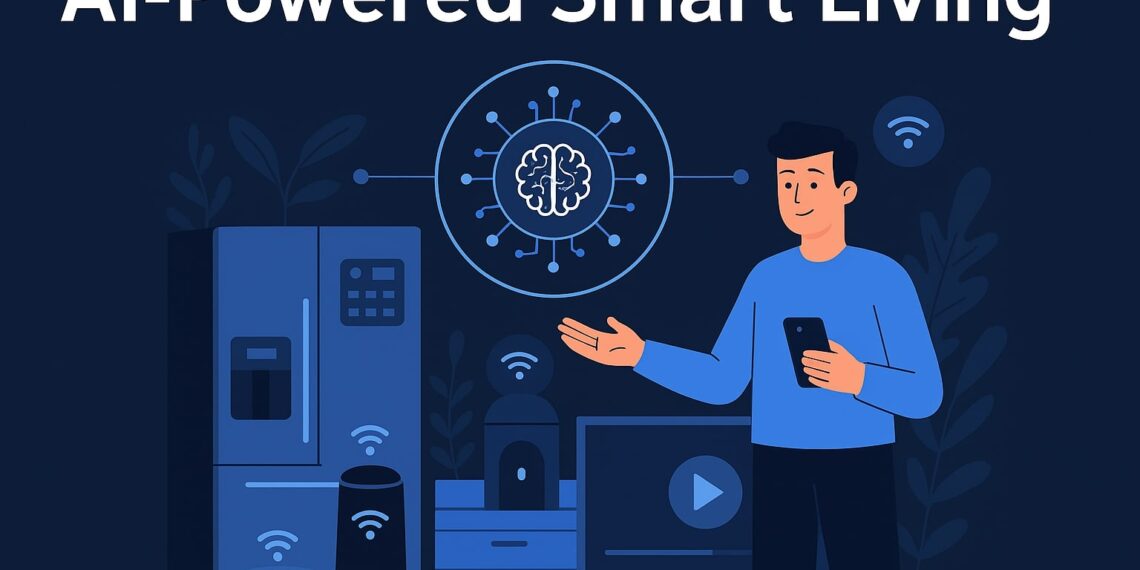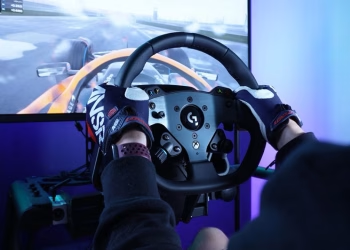AI-Powered Smart Living Revolution: The Indian household of 2025 looks dramatically different from just five years ago. What started as simple automation has evolved into intelligent ecosystems that anticipate needs, learn preferences, and seamlessly integrate into daily life. Here’s how AI is transforming smart living across India.
Table of Contents
Market Overview
| Market Metrics | 2025 Data |
|---|---|
| Smart Home Market Size | US$7.3 billion in India |
| Growth Rate | 9% annualized through 2030 |
| Key Drivers | Tier 2 & Tier 3 city adoption |
| Consumer Focus | Cost savings & productivity |
| Market Trend | From automation to intelligence |
The Transformation Story
Then vs Now
| Aspect | 5 Years Ago | 2025 |
|---|---|---|
| Television | Simple TV set | AI-powered entertainment hub |
| Air Conditioning | Preset timers | Learning from daily routines |
| User Interaction | Manual controls | Context-aware adaptation |
| Technology Role | Basic automation | Invisible assistant |

Industry Leaders Speak
BenQ India: Visual Intelligence Revolution
Rajeev Singh, Managing Director, BenQ India and South Asia, explains the shift:
“India’s consumer tech landscape is undergoing a true AI transformation, moving beyond basic automation to intelligent systems that genuinely understand context and adapt to individual needs.”
BenQ’s AI Innovations:
| Product | AI Feature | Benefit |
|---|---|---|
| W2720i & W4100i Projectors | AI-powered cinema modes | Auto-adjust to lighting & content |
| MOBIUZ Gaming Monitors | AI Contrast technology | Enhanced dark scene details |
| Display Systems | Learning algorithms | Auto fine-tuning based on usage |
Hisense India: Making Tech Feel Natural
Pankaj Rana, CEO of Hisense India shares their philosophy:
“AI is no longer just a feature, it’s shaping how we live, interact, and make decisions every day. Our goal is to make technology feel less like tech and more like a natural extension of your lifestyle.”
Hisense AI Features:
- Hi-View Engine – Auto picture & sound adjustment
- Regza Engine ZRi – Content preference learning
- AI Energy – Background optimization
- AI Scenario – Routine adaptation
Democratizing Smart Living
Cellecor: Accessibility First
Ravi Agarwal, Founder and MD, Cellecor Gadgets emphasizes inclusivity:
“At Cellecor, we believe smart living should be simple, intuitive, and accessible to every Indian household. Our mission is to democratize technology.”
Cellecor’s Smart Ecosystem:
| Product Category | AI Features | Target Market |
|---|---|---|
| Smart TVs | Voice assistance, app integration | Tier 2 & 3 cities |
| Smartwatches | Bluetooth calling, health tracking | Value-conscious users |
| Overall Focus | Practical, everyday utility | Pan-India accessibility |
Wearables: From Trackers to Companions
Amazfit India: Intelligent Lifestyle Integration
CP Khandelwal, CEO PR Innovations & Brand Custodian, Amazfit India highlights the evolution:
“AI-enabled wearables like Amazfit are no longer accessories – they’re central to the connected, intuitive ecosystem of smart living.”
Advanced Wearable AI:
| Feature | Technology | Impact |
|---|---|---|
| Navigation | Offline maps with location intelligence | Real-time guidance |
| Battery | Adaptive optimization | Usage pattern learning |
| Health | Heart rate variability & stress tracking | Proactive wellness |
The CES 2025 Impact
Breakthrough Innovations Showcased:
- Intelligent Wearables – Beyond basic fitness tracking
- AI-Powered Robotics – Personalized home assistance
- Generative AI Applications – Content creation & communication
- Smart Home Integration – Seamless ecosystem connectivity
Consumer Behavior Shifts
What’s Driving Adoption:
| Factor | Impact |
|---|---|
| Efficiency Focus | Long-term cost savings priority |
| Productivity Enhancement | Time-saving solutions valued |
| Regional Growth | Tier 2 & 3 cities leading adoption |
| Value Consciousness | ROI-focused purchasing decisions |
Key Consumer Preferences:
✅ Seamless Integration – Technology that works invisibly
✅ Contextual Intelligence – Systems that understand situations
✅ Adaptive Learning – Products that improve with use
✅ Practical Solutions – Features solving real problems
Market Segments Transformation
Entertainment & Visual
- Smart Projectors with ambient light adaptation
- Gaming Monitors with AI-enhanced visuals
- Smart TVs with content recommendation engines
Home Automation
- Climate Control learning from behavioral patterns
- Lighting Systems adapting to daily routines
- Security Solutions with intelligent monitoring
Personal Technology
- Wearables as health & productivity companions
- Smart Audio with personalized sound profiles
- Mobile Accessories with predictive functionality
The Simplicity Principle
Industry Consensus:
“Success comes from understanding that technology should adapt to people, not the other way around.”
Design Philosophy:
- Invisible Operation – AI works in background
- Intuitive Interaction – Natural user experience
- Problem-Solving Focus – Addressing real-life challenges
- Human-Centric – Supporting rather than replacing human activities
Future Outlook
Growth Projections:
| Timeline | Expected Development |
|---|---|
| 2025-2027 | Mass adoption in Tier 2/3 cities |
| 2027-2029 | Advanced AI integration across categories |
| 2029-2030 | Smart living becomes mainstream |
Key Trends to Watch:
- Voice-First Interfaces becoming standard
- Predictive Maintenance in home appliances
- Health-Focused AI in everyday devices
- Energy Optimization through intelligent systems
Bottom Line
The Reality: AI-powered smart living in India isn’t about complex technology—it’s about making life simpler, more efficient, and more enjoyable.
For Consumers: Smart devices are becoming affordable, practical solutions rather than luxury items.
For Industry: Success lies in understanding Indian consumer needs and delivering contextual intelligence.
Market Impact: With a US$7.3 billion market size and 9% annual growth, AI-integrated products are reshaping how Indians experience their homes.
Key Takeaways
✅ Smart Home Market: US$7.3 billion in 2025
✅ Growth Driver: Tier 2 & 3 city adoption
✅ Focus Shift: From automation to intelligence
✅ Consumer Priority: Efficiency and cost savings
✅ Industry Goal: Making smart living accessible to all
The future of AI-powered smart living in India lies in simplicity—technology that adapts to people, solving real problems while remaining accessible to diverse consumer needs.
What smart AI features would you most value in your daily life? Share your thoughts on how AI can make Indian homes more intelligent and efficient!








